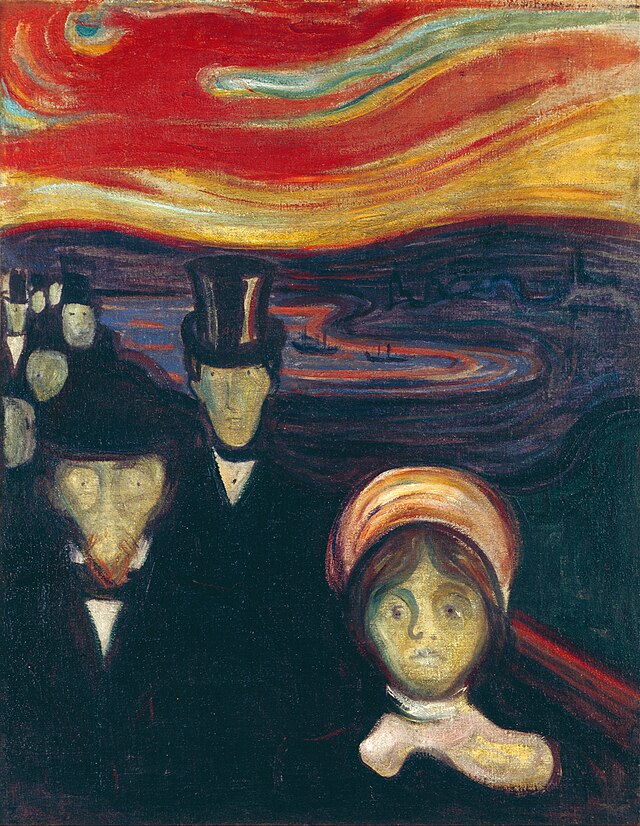Go to any town or city today. Look around and observe the youth, and what do you see? No doubt, you see young ones struggling to fit in, wearing questionable clothing, and just generally appearing insecure. This is nothing new for teens an adolescents, but this one seems more chronic, more deeply disoriented. You are witnessing what many have come to call “The Anxious Generation.”
As social psychologist Jonathan Haidt shows, the percentage of college students diagnosed with anxiety and/or depression has skyrocketed since 2010. In the overview of his book, The Anxious Generation, Haidt shows a graph indicating a 134% increase in the cases of diagnosed anxiety and a 106% increase in depression since 2010. That’s astounding. Think about it, in just fifteen short years, these two indicators of mental illness amongst the young have more than doubled. Why is this?
The Meaning Crisis and the Anxious Generation
Many in my generation, raised before every 10 year old had an iPhone in their hands, might blame it on the devices. “There are too many phones and video games,” we might say. “Today’s youth are spending hours on social media, frying their brains with brain junk food which hollows out the souls.” We might even be right, but is all the social media and cell phone frenzy the cause or the symptom of the anxious generation?
Why are they anxious anyway? Wise philosopher John Vervaeke astutely characterizes the problem calling it a “Meaning Crisis.” He explains that at the root of this is the pervasive sense of alienation today’s youth – and people in general – feel from themselves, their environment, from each other, and perhaps even from their God (however each conceives of that). We feel more alone than we ever have. I am so convinced of that that I’d call it a fact.
Lest we be too harsh on ourselves, however, it’s easy to see this anxious generation as a natural symptom of our times. Rudolf Steiner taught that we are living in what he called the Age of Loneliness which spans from roughly 1413 – 3573 C.E. (These dates are based on the precession of the equinoxes, a kind of astronomical/astrological clock). This is a time when individuals are seeking a deeper sense of identity, and that is also perhaps suggestive of the rise in autistic spectrum conditions. (Autism here is seen as a full or partial withdrawal of the self from the world). In other words, the anxious generation may be so anxious because the human oversoul is seeking deeper meaning than ever before, and this anxiety will build until it finds its solution in said deeper meaning.
Remedy for the Anxious Generation
Are you 42 or older? If so, you will have lived through a mini Age of Loneliness ages 35-42, according to the Anthroposophical picture of human biography. This is a time when many divorces happen. Some might also call it the midlife crisis point. You’ve been here for perhaps half your lifespan, and now what? All the trivialities of your earlier years no longer satisfy. You want something more real.
That, we can say, is what all of humanity is striving for right now, consciously or unconsciously. I agree with Vervaeke, therefore, when he says that the meaning crisis is underneath this. Humanity feels a lack of meaning, and that is hitting young people the hardest.
But, where do we find it? It’s not in the cell phones, the video games. It’s not in good food, movies, or fancy cars. The meaning we seek is not in anything fleeting. We can only find it in something deeper and enduring. What is that deeper, enduring thing that gives human life its meaning? What is the hub around which the needle turns, giving orientation to all things in our lives? Perhaps if we, adults, find it, we will know how to guide the anxious generation to find it for themselves. I will leave it at that. Make of my words what you will.


Leave a Reply
You must be logged in to post a comment.